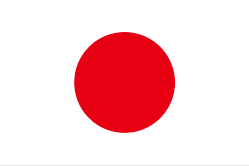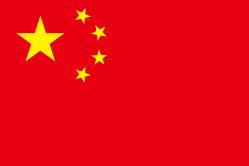Introduction: Digital Technologies Reshaping Textile Printing
The global market for Direct to Film (DTF) printers is experiencing rapid growth. This expansion is driven by several key factors, including the dynamic nature of the textile and apparel industry, the increasing adoption of digital technologies across manufacturing, and a growing emphasis on environmental considerations. For businesses in the printing and textile sectors, understanding these market dynamics and leveraging accessible technologies like DTF is becoming increasingly relevant for navigating the competitive landscape and pursuing growth.
This article explores key market drivers, how DTF printers align with these trends, and general applications where businesses are utilizing this technology to capitalize on current opportunities.
Market Growth and Drivers
The market for DTF printers is on a clear upward trajectory. While specific figures vary between market research firms, reports consistently indicate significant growth. For example, according to a report by Grand View Research, the global DTF printer market size was estimated at USD 286.5 million in 2023 and is projected to grow at a compound annual growth rate (CAGR) of 19.9% from 2024 to 2030. (Source: Grand View Research - Search "Direct to Film (DTF) Printer Market Size, Share & Trends Analysis Report"). This rapid growth underscores the increasing adoption and potential of DTF printers in various printing and textile applications.
Key drivers contributing to this growth include:
·Dynamic Textile and Apparel Industry: The global textile and apparel industry is characterized by evolving consumer demands for variety and speed, partly driven by fast fashion models. This creates demand for more flexible and faster production methods than traditional bulk printing often allows.
·Increased Digital Technology Adoption: The integration of digital technologies throughout the design and production workflow is transforming the printing industry. Digital printing solutions like DTF offer compatibility with design software and e-commerce platforms, supporting more efficient and responsive workflows compared to entirely analog processes.
·Environmental Considerations: Growing environmental awareness and regulations are influencing printing practices. DTF printers, utilizing water-based pigment inks, can offer advantages in reducing water usage compared to traditional wet processes like screen printing. While waste management (film, powder) remains a consideration, the process can contribute to reducing the environmental footprint in specific applications.
Addressing Business Needs
To capitalize on market opportunities driven by these trends, businesses need capabilities that address key challenges:
·Meeting Varied and Responsive Demands: Businesses benefit from being able to produce a range of custom and small-batch products efficiently to meet dynamic market needs and short-run requirements. DTF technology offers flexibility in this area.
·Balancing Quality and Cost: Delivering quality prints while managing production costs is essential. DTF printers are capable of producing vibrant and detailed prints, which can be a factor in maintaining a competitive edge, particularly for complex or multi-color designs in smaller quantities.
·Enhancing Product Offerings: The ability to print on a variety of materials with relative ease allows businesses to expand their product catalogs and offer broader customization options.
Real-World Applications and Strategies
DTF technology is being implemented across different business models seeking to leverage the capabilities described above. Precise, publicly available business metrics for individual small businesses are often proprietary, but observations within the industry highlight common applications:
·Online Print-on-Demand (POD) Businesses: Platforms and entrepreneurs operating in the POD space rely heavily on digital printing technologies for their model of producing items only after an order is placed. DTF, alongside other digital methods like DTG, is utilized for its efficiency in producing single units or small runs on demand across various apparel types, enabling rapid response to trends and diverse product catalogs without inventory risk.
·Local Custom Print Shops and Entrepreneurs: Smaller print shops and new ventures are adopting DTF to add or enhance custom apparel services. This allows them to cost-effectively handle orders for small groups, local businesses, or individual customers requiring personalized clothing with multi-color graphics, expanding their service offerings beyond traditional limitations.
·Specialty Product Creators: Businesses focusing on niche products like custom pet accessories, personalized bags, or unique home textiles leverage DTF for its versatility across different materials and product shapes, enabling them to create specialized, customized goods efficiently in smaller volumes.
These applications illustrate how DTF serves as an enabler for businesses needing flexibility, efficiency in small quantities, and the ability to print on diverse materials.
Considerations for Implementation
While DTF offers notable advantages, potential users should also consider aspects such as the required equipment investment (which varies by scale), the need for regular maintenance (particularly for white ink systems), the handling of adhesive powder, and ensuring adequate ventilation during the heat pressing and curing process. Understanding these practicalities is part of successfully integrating DTF technology.
Conclusion: Leveraging DTF for Business Potential
In conclusion, the DTF printer market's growth reflects its increasing relevance as a tool for businesses in the printing and textile sectors. Driven by industry dynamics, digitalization, and environmental considerations, DTF technology offers capabilities that align well with the needs of a market demanding speed, variety, and personalization. By understanding how DTF addresses operational needs and by exploring its applications in areas like POD, local customization, and specialty products, businesses can position themselves to leverage this technology for enhancing their offerings and pursuing growth in a competitive market.
 English
English







.png)
